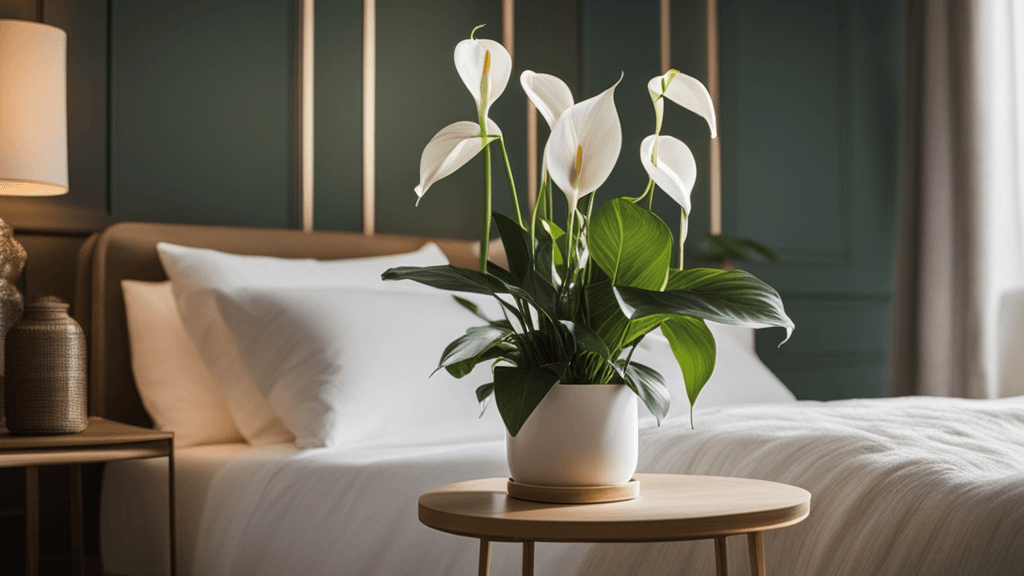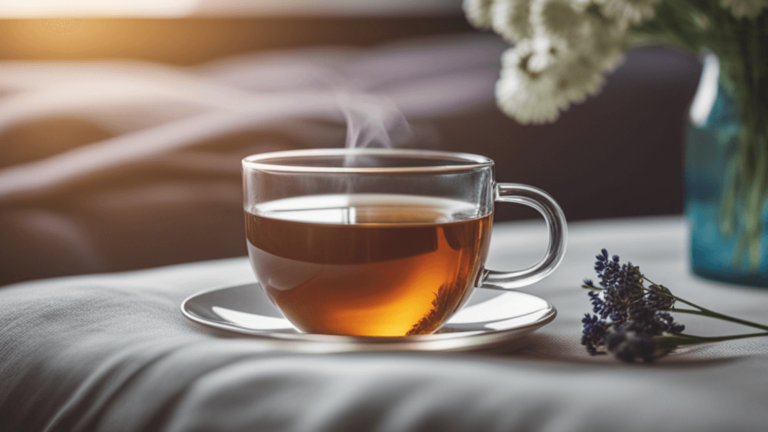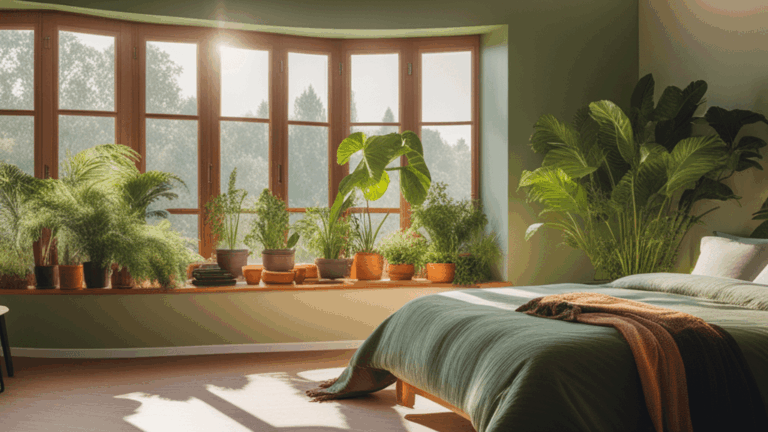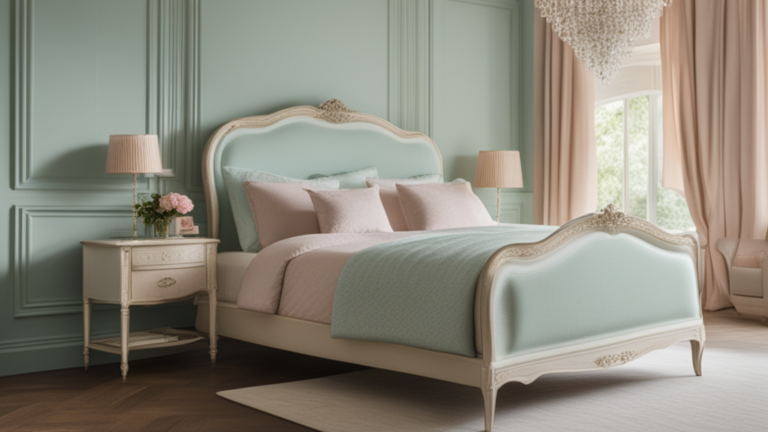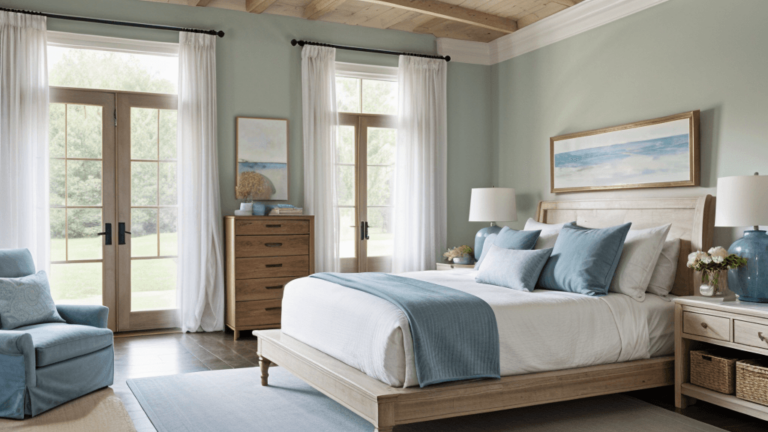8 Festive Bedroom Plants for Better Sleep: Nature’s Holiday Gift
In our quest for better sleep, the answer might be growing right before our eyes. Studies reveal that introducing specific plants to your bedroom can improve sleep quality, while simultaneously transforming your space into a festive holiday sanctuary. This natural approach to better rest combines ancient wisdom with modern science, offering a sustainable solution to sleep challenges.
The connection between plants and sleep quality has gained significant scientific backing. Research from the NASA Clean Air Study and subsequent investigations demonstrate that certain plants can act as natural air filters, removing air pollutants such as benzene, formaldehyde, and trichloroethylene. Additionally, exposure to natural elements in sleeping spaces can reduce stress levels and improve sleep quality, creating a more calming and tranquil environment.
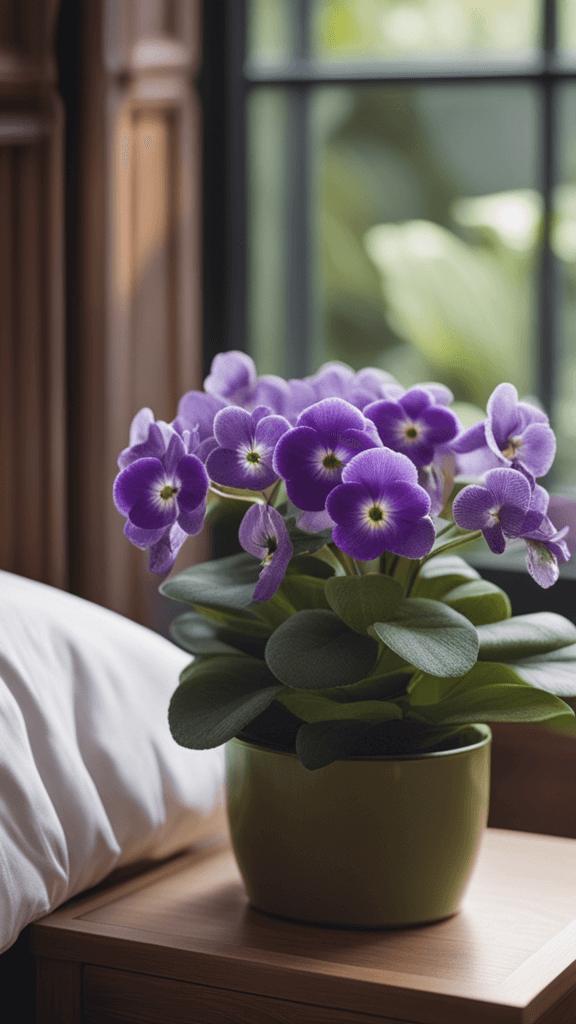
During holiday seasons, when stress levels typically increase and sleep quality often decreases, these botanical sleep aids become even more valuable. Our carefully selected collection of eight sleep-promoting plants offers dual benefits: enhanced sleep quality and natural holiday decor that continues working long after the celebrations end.
Each plant in this guide has been chosen for its specific sleep-promoting properties:
- Air-purifying capabilities that remove common bedroom pollutants
- Optimal humidity regulation for better breathing during sleep
- Natural light filtration that supports healthy circadian rhythms
- Calming visual elements that reduce evening stress levels
Whether you’re struggling with seasonal sleep changes or seeking sustainable holiday decorating options, these plants offer a science-backed solution.
Let’s explore how these eight remarkable plants can transform your bedroom into a sleep sanctuary while bringing holiday joy throughout the seasons.
Peace Lily – The Serene Sleeper
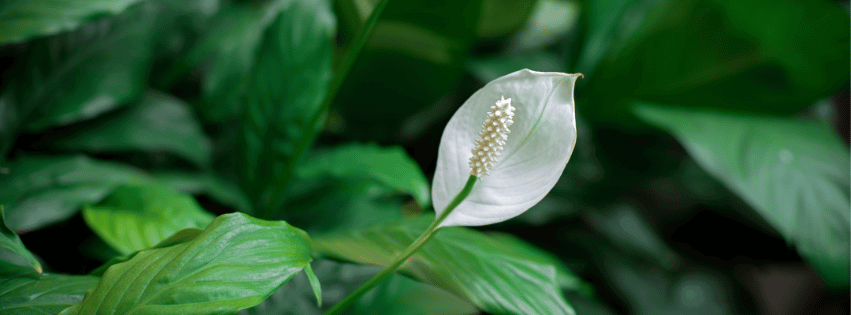
The Peace Lily (Spathiphyllum) stands as a premier choice for sleep-promoting bedroom plants, combining air-purifying capabilities with elegant aesthetics. NASA’s Clean Air Study found that Peace Lilies are effective at removing airborne pollutants such as benzene, trichloroethylene, formaldehyde, and ammonia.
While Peace Lilies are powerful air purifiers, they contain calcium oxalate crystals. Keep them elevated and away from curious pets or small children who might be tempted to nibble on the leaves.
This serene sleeper earned its reputation through impressive air filtration properties and natural humidity regulation. Peace Lilies increase room humidity through transpiration, creating optimal sleeping conditions. According to the Environmental Protection Agency (EPA), ideal indoor relative humidity levels should be maintained between 30% and 50%, with some studies suggesting an optimal range of 40% to 60%. Peace Lilies soak up and expel a high volume of moisture.
Bedroom placement is an important consideration for maximizing the Peace Lily’s sleep-promoting benefits. While Peace Lilies tolerate low light, placing them in bright, indirect sunlight optimizes their air-purifying capabilities while maintaining their striking appearance.
The plant’s care requirements align well with bedroom environments. Peace Lilies thrive in temperatures between 65-80°F (18-27°C), which is close to ideal sleeping temperatures of 60-67°F (15-19°C). They communicate water needs clearly by drooping leaves, making maintenance straightforward even for novice plant parents. Weekly watering typically suffices, though adjust based on season and room humidity.
During the holiday season, Peace Lilies offer a sophisticated alternative to traditional festive plants. Their white spathes, resembling elegant stars, complement seasonal decor while maintaining their air-purifying benefits year-round.
For optimal results, pair your Peace Lily with a potting mix that retains moisture but also drains well to prevent waterlogging, which can lead to root rot. A blend of ingredients like coco coir, orchid bark, and perlite is recommended. Remember to dust leaves monthly, as clean foliage increases air-purification efficiency.
Christmas Cactus – The Holiday Dream Maker
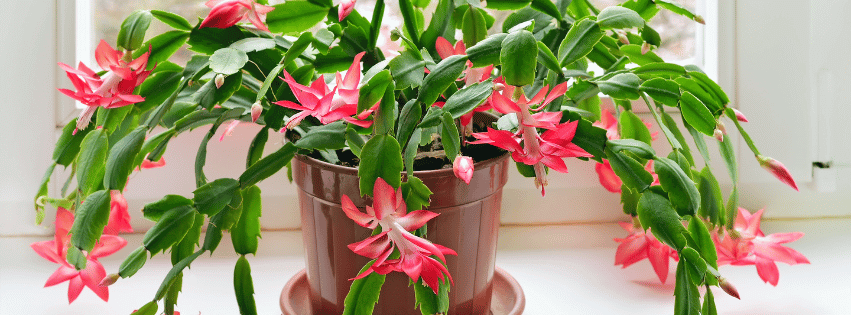
The Christmas Cactus (Schlumbergera) emerges as a prime choice for sleep-promoting holiday plants, distinguished by its unique nocturnal oxygen production cycle. Unlike most houseplants, Christmas Cacti perform Crassulacean Acid Metabolism (CAM) photosynthesis, which not only assists in water conservation but also releases oxygen during nighttime hours.
The gentle, soothing colors of its pink, red, or white blooms can create a calming atmosphere that may contribute to better sleep onset by helping to lower evening stress levels. Christmas Cacti can produce numerous blooms during their flowering period, which can last several weeks, creating a subtle yet effective calming display. With proper care, a Christmas Cactus can bloom multiple times a year.
Temperature sensitivity makes this plant an excellent bedroom companion, as it thrives in the same conditions that promote quality sleep. Optimal blooming occurs between 50-55°F (10-13°C), while daytime temperatures should be around 70°F (21°C), similar to recommended sleeping temperatures. Humidity levels of 50-60% are beneficial for Christmas cacti, and this range can also be comfortable for sleeping.
Care requirements complement typical bedroom routines. Christmas Cacti prefer complete darkness to initiate blooming, naturally synchronizing with healthy sleep schedules. Consider giving the plant a dry rest period for about a month after flowering. Regular seasonal care ensures consistent health benefits throughout the year.
Longevity adds to this plant’s value as a sleep aid. Well-maintained Christmas Cacti can thrive for many years, making them not just seasonal sleep promoters but long-term bedroom companions. For maximum sleep-promoting benefits, position your Christmas Cactus in a location where it gets indirect light during the day, and is close enough to your sleeping area to improve air quality.
African Violet – The Cozy Comfort Plant
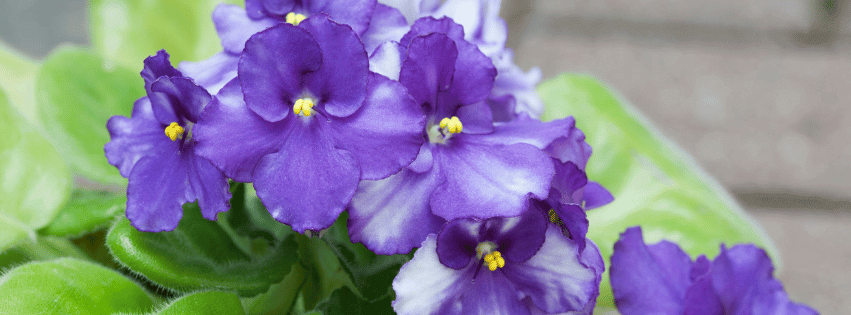
The African Violet (Saintpaulia) stands out as a charming and beneficial bedroom companion. They are known for their long-lasting blooms, often flowering for up to 10-11 months a year. This continuous display of color can add a touch of natural beauty to your sleeping space year-round, providing sustained therapeutic benefits and reduced stress levels.
Their compact size, typically 6-8 inches in height and spread, allows for creative clustering, making it easy to arrange them in visually appealing groupings on windowsills, nightstands, or shelves. Available in over 16,000 registered varieties, with colors ranging from deep purple to pink and white, these plants can easily complement various holiday themes for a festive bedroom decor.
African Violets thrive in humidity levels between 50% and 60%, beneficial for sleeping, though their native habitat in the Usambara Mountains of East Africa has humidity levels of 70% to 80%. African Violets can adapt well to slightly lower levels as long as they remain consistent.
To increase humidity around African Violets:
- Group plants together to create a favorable microclimate.
- Use self-watering devices with capillary matting.
- Place containers of water near the plants.
- Consider using a humidifier, especially during dry winter months.
The plant’s care requirements naturally complement healthy sleep routines. African Violets thrive in temperatures between 65-75°F (18-24°C), matching ideal sleeping conditions. They require approximately 10-12 hours of bright, filtered light daily, creating a natural rhythm that parallels healthy sleep-wake cycles. They should also have a minimum of 8 hours of darkness to encourage blooming. Synchronizing plant care with daily routines can reinforce circadian rhythms, potentially improving sleep quality.
Anthurium – The Heart of Peace
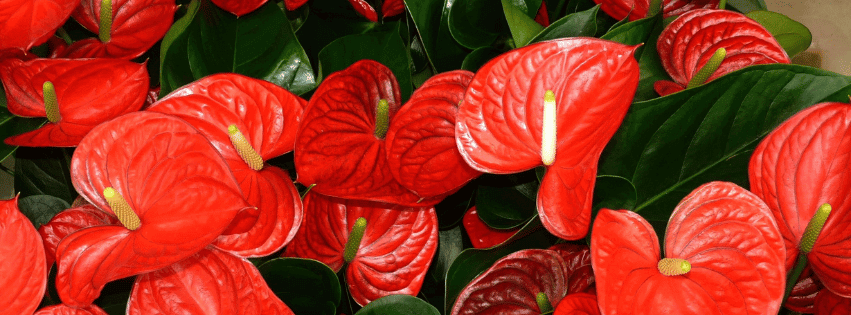
The Anthurium, renowned for its distinctive heart-shaped leaves and flowers, stands out as a powerful air-purifying bedroom plant. Anthuriums can remove harmful substances like formaldehyde, ammonia, and xylene from indoor air, making them excellent natural air purifiers for sleep environments.
This tropical beauty’s signature red, pink, or white spathes (modified leaves) serve multiple benefits in a sleep sanctuary. The presence of plants like Anthuriums can help reduce stress and create a calming atmosphere. The plant’s vibrant colors can bring joy and positivity to any room, which may help with mood enhancement, and improve sleep quality.
Anthuriums excel in bedroom environments, thriving in temperatures between 65-80°F (18-27°C) during the day. At night, temperatures can drop slightly, but should not fall below 60°F (15°C). As a general guideline, strive for 6 to 8 hours of bright, indirect sunlight daily. Anthuriums are humidity-loving plants that thrive in high moisture environments, so consider increasing the humidity near the plant.
Maintaining slightly moist soil optimizes the plant’s health and air-purifying capabilities. For best results, water when the top inch of soil feels dry, typically every 5-7 days in average bedroom conditions.
During holiday seasons, Anthuriums offer a sophisticated alternative to traditional festive plants. Their natural colored spathes can last for weeks, providing sustained color throughout the holiday period. A medium-sized Anthurium can effectively influence air quality in your bedroom space, and thrive for several years when provided with the right care and conditions.
Croton – The Colorful Dream Enhancer

The Croton (Codiaeum variegatum) emerges as a vibrant contributor to sleep-friendly environments, with its multicolored foliage offering both aesthetic and therapeutic benefits. The captivating foliage of Crotons may serve as a natural mood booster, potentially alleviating anxiety and promoting a sense of calm in your living space.
It possesses remarkable air-purifying capabilities, coming in as one of NASA’s top 50 air-cleaning houseplants, helping to remove common indoor pollutants such as benzene and formaldehyde. A mature Croton, typically reaching 2-3 feet in height, contributes to cleaner air in a bedroom space, and placing multiple Crotons strategically can create overlapping purification zones.
Crotons’ natural color progression aligns perfectly with seasonal changes, displaying deeper reds, oranges, and yellows as days shorten – a process that mirrors our body’s natural circadian rhythm adjustments. Exposure to bright, cheery colors during dark winter months may help combat the low-energy, depressing mood associated with seasonal affective disorder (SAD).
For optimal growth, position your Croton in bright, indirect light. These plants thrive in temperatures between 60-85°F (15-29°C), which aligns well with comfortable sleeping conditions. Crotons prefer consistent watering and moderate humidity levels.
Maintain consistent humidity levels between 40-60% to optimize both plant health and sleep benefits.
During holiday seasons, Crotons serve as living decorations. Their natural palette of red, orange, yellow, and green coordinates perfectly with autumn and winter decor while providing consistent air-purifying benefits. With proper care, a Croton can retain its therapeutic foliage for several years, making it a long-term investment in sleep quality.
Kalanchoe – The Gentle Sleep Guardian

The Kalanchoe (Kalanchoe blossfeldiana) distinguishes itself as a sleep-promoting succulent through its unique nocturnal oxygen production cycle. This plant utilizes Crassulacean Acid Metabolism (CAM), allowing it to release oxygen at night, potentially enhancing sleep quality in enclosed bedroom spaces.
This compact succulent delivers impressive air-purifying benefits within a sleep environment. Kalanchoe can help remove volatile organic compounds (VOCs) commonly found in bedroom environments, including those released by synthetic bedding materials. It’s listed among NASA’s top 28 air-purifying plants.
Kalanchoe’s long-lasting blooms, which can persist for 8-12 weeks, provide sustained visual appeal. Available in a variety of colors from soft pinks to vibrant oranges, these plants offer a natural way to add warmth and color to your sleeping area. The presence of colorful, flowering plants like Kalanchoes may help create a more relaxing atmosphere conducive to sleep.
These succulents thrive best in temperatures ranging from 60°F to 85°F (15°C to 29°C), making them ideal for most indoor environments. It’s important to avoid exposing them to drafts or cold spots, as they can be sensitive to temperature fluctuations. When it comes to watering, Kalanchoes prefer a low-maintenance approach. Allow the soil to dry out completely between waterings, ensuring that you water deeply but infrequently.
The plant’s water-storing capabilities make it an ideal bedroom companion, releasing moisture gradually throughout the night. A Kalanchoe contributes to the recommended 40-60% humidity range for optimal sleep. This steady moisture release proves particularly beneficial during dry winter months when indoor heating systems can compromise sleep quality.
Kalanchoes, with their vibrant blooms in festive hues, add a cheerful touch to holiday decor, enhancing the spirit of celebration and bringing warmth to winter. Strategic placement maximizes both therapeutic and aesthetic benefits. Position Kalanchoe ideally on elevated surfaces where their clusters of flowers can be easily viewed.
Norfolk Island Pine – The Natural Night Light

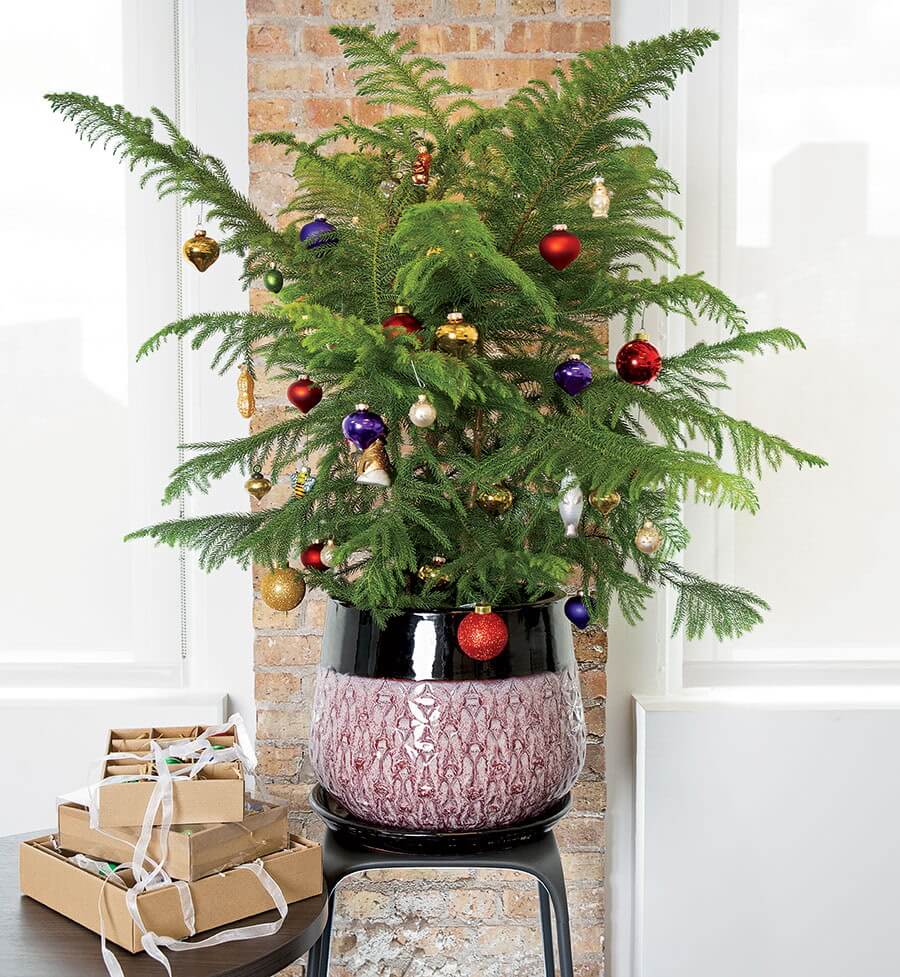
During holiday seasons, Norfolk Island Pines (Araucaria heterophylla) offer a sustainable alternative to traditional Christmas trees. Their sturdy branches can support lightweight ornaments and decorations, creating a festive atmosphere that lasts beyond the holiday season. This versatility makes them a popular choice for year-round enjoyment and decoration.
This plant’s tiered branch structure adds a decorative touch to bedrooms while requiring minimal floor space. Norfolk Island Pines grow slowly indoors, typically adding only 3-6 inches annually, making them ideal long-term bedroom companions. Their compact nature allows them to thrive in small spaces, perfect for apartments or cozy bedrooms.
The Norfolk Island Pine thrives in temperatures between 60°F and 70°F (15°C to 21°C), and bright, indirect light. When it comes to watering, Norfolk Island Pines prefer consistently moist soil but should not sit in water. Water the plant when the top inch of soil feels dry, typically every 1-2 weeks, depending on humidity levels. Speaking of humidity, these pines thrive in environments with 50-60% humidity; misting the leaves or using a humidifier can help maintain optimal moisture levels.
This holiday beauty serves as a natural sleep environment enhancer, combining air-purifying capabilities with gentle aesthetics. This elegant evergreen can help improve indoor air quality by removing harmful volatile organic compounds (VOCs) such as formaldehyde and benzene, which are commonly found in bedroom furniture.
Cyclamen – The Winter Sleep Aid
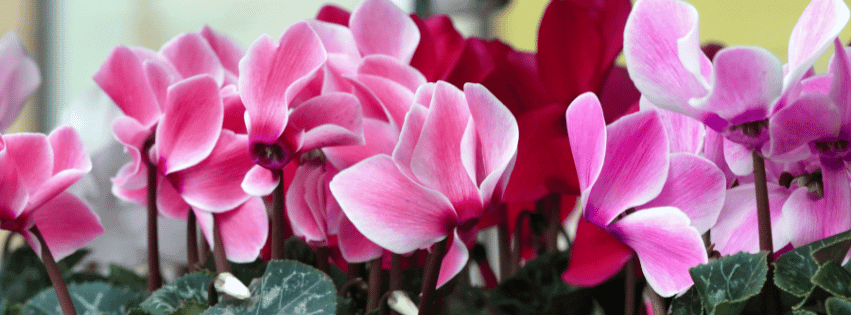
The Cyclamen (Cyclamen persicum) emerges as a distinctive sleep-promoting plant, uniquely adapted to winter environments when quality sleep becomes most challenging. This winter bloomer thrives in cooler temperatures, preferring conditions between 60-65°F (15-18°C), which aligns well with optimal sleeping temperatures.
Cyclamen demonstrates air-purifying capabilities suited to bedroom environments. These plants can help filter indoor air pollutants commonly found in heated winter bedrooms, including benzene and formaldehyde. They require high humidity to maintain their lush appearance, which can be achieved by placing the pot on a tray filled with water and pebbles or misting the leaves regularly.
When it comes to watering, Cyclamens prefer moist soil but are sensitive to overwatering. It’s best to water them when the top layer of soil feels dry to the touch, and avoid getting water on the leaves or crown to prevent rot. Watering from the bottom is recommended to ensure moisture reaches the roots.
While Cyclamens add a beautiful touch to your home, it’s important to handle them with care as they are toxic to both humans and pets.
Cyclamen’s natural blooming cycle aligns perfectly with seasonal sleep challenges. Flowering from late autumn through early spring, these plants provide up to 12 weeks of continuous blooms. Their soft pink, white, or purple flowers can add a touch of color to bedrooms during darker months, potentially helping to counteract symptoms of Seasonal Affective Disorder (SAD).
For optimal benefits, position Cyclamen plants near your bed where their nodding flowers can be easily viewed. Cyclamen’s natural winter blooming cycle provides sustained decorative appeal throughout the holiday season. Their compact size (typically 6-8 inches tall) makes them perfect for bedside tables or elevated displays.
Holiday Decorating Guide: Seasonal Styling with Sleep-Promoting Plants
Let’s explore creative ways to arrange your festive bedroom plants for better sleep throughout the holiday seasons.
Thanksgiving Arrangements
Transform your sleep sanctuary with autumn-inspired arrangements featuring Croton’s rich foliage and Peace Lily’s elegant blooms. Create impact with:
- Elevated groupings of Crotons at varying heights (12″, 18″, 24″)
- Peace Lilies nestled among natural elements like dried wheat
- Anthurium’s heart-shaped leaves adding dramatic contrast
- Natural fiber baskets and textured pottery enhancing seasonal warmth
Christmas and Winter Holidays
Maximize both festive appeal and sleep benefits with strategic holiday displays:
- Norfolk Island Pine as a sustainable Christmas tree alternative
- Christmas Cactus clusters providing holiday color
- Cyclamen adding bursts of winter color while maintaining optimal humidity
- Red Anthuriums offering poinsettia alternatives with extended blooming periods
New Year Celebrations
Transition into January with:
- Kalanchoe’s extended blooming period supporting winter sleep patterns
- African Violets providing consistent color through seasonal changes
- Fresh arrangements emphasizing clean starts and renewal
- Metallic containers reflecting soft light for ambient evening illumination
- Simple, uncluttered plant groupings to inspire a sense of calm and new beginnings
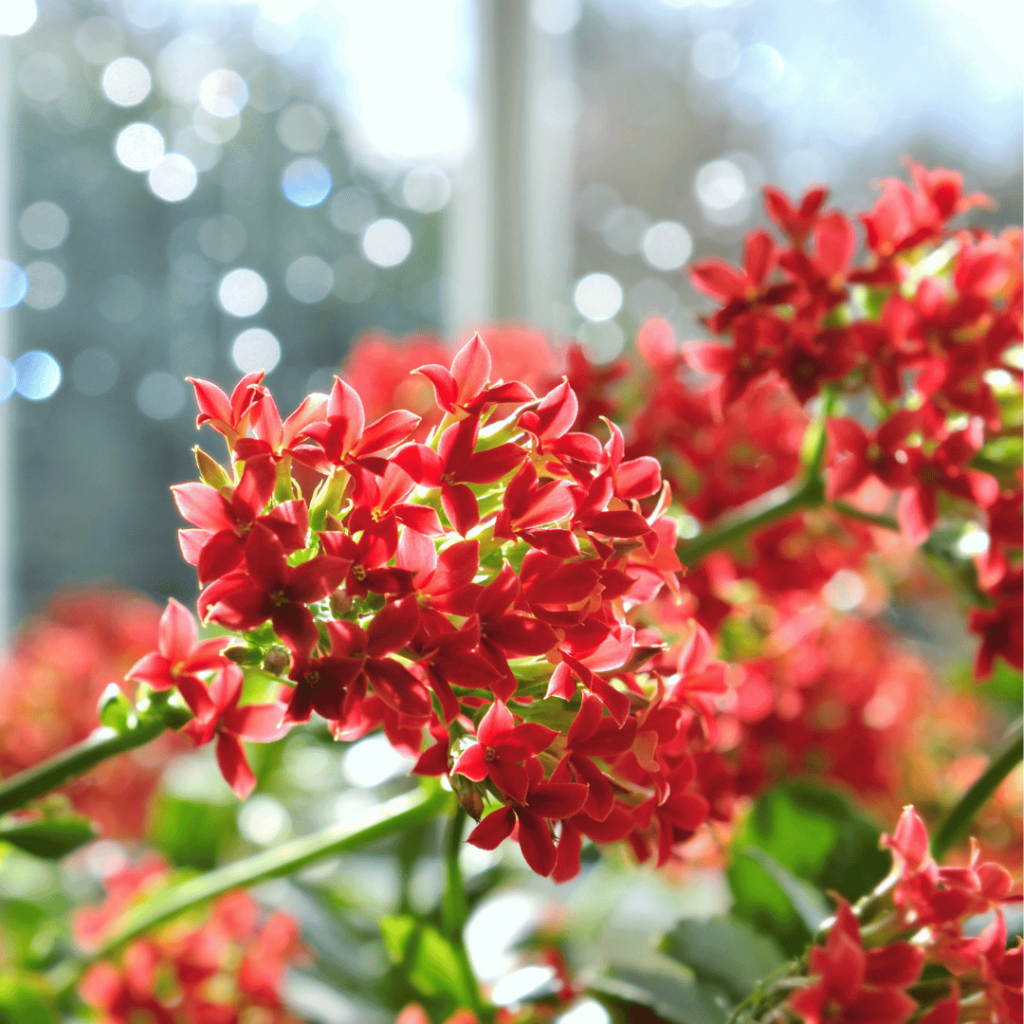
Valentine’s Day
Create romantic sleep sanctuaries with:
- Heart-shaped Anthurium leaves and blooms
- Pink Cyclamen clusters for gentle color therapy
- African Violet combinations in rose tones
- Natural textile accents complementing plant colors
Spring Transitions
Welcome warmer seasons while maintaining sleep benefits:
- Rotate winter bloomers with fresh growth
- Introduce pastel-colored Cyclamen varieties
- Layer African Violets with seasonal accents
- Refresh container gardens with spring elements
Year-Round Plant Care
- Monitor humidity levels as seasons change
- Adjust watering schedules with heating/cooling shifts
- Update containers while maintaining proper drainage
- Consider light changes with longer days
Creating Your Perfect Plant-Enhanced Sleep Sanctuary…
The integration of carefully selected bedroom plants offers a natural, sustainable approach to improving sleep quality while enhancing holiday decor. A thoughtfully curated collection of sleep-promoting plants can improve air quality, maintain optimal humidity levels, and help reduce stress before bedtime.
Our featured plants – from the air-purifying Peace Lily to the oxygen-producing Christmas Cactus – work synergistically to create an ideal sleep environment. Combining different species can maximize benefits, as complementary plants enhance overall air purification and create a more balanced environment.
The year-round benefits extend beyond sleep improvement. These plants provide natural humidity regulation during dry winter months, help remove volatile organic compounds (VOCs) from the air, and offer sustainable holiday decorating options that continue working long after seasonal celebrations end.
To optimize your plant-enhanced sleep sanctuary:
- Position plants strategically for overlapping air-purification zones
- Maintain consistent care routines that align with natural sleep-wake cycles
- Rotate seasonal bloomers to ensure continuous visual and therapeutic benefits
- Monitor humidity levels to maintain optimal conditions for sleep
Remember, investing in sleep-promoting plants offers cumulative benefits. The consistent presence of indoor plants can significantly improve your sleep environment, making them a valuable addition to any bedroom.
Sleep-Promoting Plants FAQ
Are these plants safe for pets?
Peace Lilies, Anthurium, Croton, Cyclamen, and Kalanchoe contain substances that can be harmful if ingested. Peace Lilies, Anthurium, and Croton contain calcium oxalate crystals, while Cyclamen contains cyclamine (with the tubers being especially dangerous). Kalanchoe contains cardiac glycosides which can cause serious heart problems if ingested. Keep these plants elevated or in pet-free rooms. Christmas Cactus, African Violet, and Norfolk Island Pine are generally pet-safe alternatives. Always consult the ASPCA plant database for specific concerns.
How often should I water bedroom plants?
Watering needs vary seasonally:
- Succulents (Christmas Cactus, Kalanchoe): Every 7-10 days
- Tropical plants (Peace Lily, Anthurium, Croton): Every 5-7 days
- Flowering plants (African Violet, Cyclamen): Every 3-5 days
- Norfolk Island Pine: Keep consistently moist but not wet, typically every 5-7 days
Can I keep multiple plants in my bedroom?
To maximize air-purifying benefits without creating excess humidity, it’s beneficial to have 2-3 medium-sized plants per 100 square feet. Combining different plant species can enhance their overall benefits. For example, pairing plants like the Peace Lily, which is known for its air-purifying properties, with plants like Kalanchoe, which is noted for its oxygen production, can create a complementary effect.
What if my bedroom has low light?
Peace Lilies are well-suited for low-light conditions. They can survive and maintain healthy foliage in shaded areas, although they may produce fewer blooms without sufficient light. African Violets can also tolerate low light but may not bloom as profusely as they would in brighter conditions. However, they generally require more light than Peace Lilies to thrive.
How do I maintain humidity without promoting mold?
To maintain humidity without promoting mold, consider using humidity trays. These trays help increase moisture around your plants without creating an overly damp environment. It’s also important to ensure good air circulation to prevent moisture from becoming stagnant.
Should I remove plants at night?
You don’t need to remove plants at night. In fact, many plants, especially CAM plants like Christmas Cactus and Kalanchoe, continue to release oxygen during the night. Having plants in your environment consistently can contribute to a more restful sleep by creating a calming and natural atmosphere. So, it’s perfectly fine to leave them in place throughout the day and night.
How do I prevent pest issues?
To prevent pest issues, it’s important to regularly inspect your plants. A weekly check can help you catch any potential problems early. Maintaining proper humidity levels and avoiding overwatering are also crucial, as these conditions can attract pests. Using neem oil solutions as a preventive measure can be beneficial. When introducing new plants to your space, it’s a good idea to quarantine them for a couple of weeks before placing them near your bedroom.
What’s the best way to incorporate these into holiday decor?
Layer plants at different heights, mixing flowering plants with those that have attractive foliage. This creates a visually appealing arrangement that adds depth and variety. Choose natural containers that fit with your holiday theme. Not only do these add a warm, organic feel, but they also ensure that your plants have proper drainage. To keep your decor fresh and engaging, consider rotating your plant displays seasonally.

